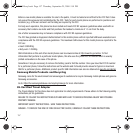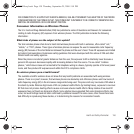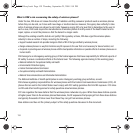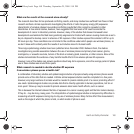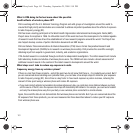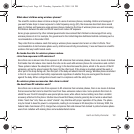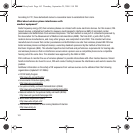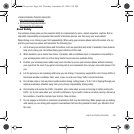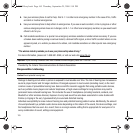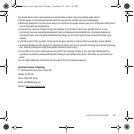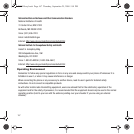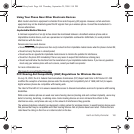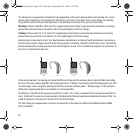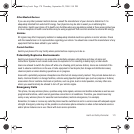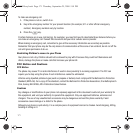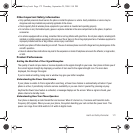
165
8.
Use your wireless phone to call for help. Dial 9-1-1 or other local emergency number in the case of fire, traffic
accident or medical emergencies.
9. Use your wireless phone to help others in emergencies. If you see an auto accident, crime in progress or other
serious emergency where lives are in danger, call 9-1-1 or other local emergency number, as you would want
others to do for you.
10. Call roadside assistance or a special non-emergency wireless assistance number when necessary. If you see
a broken-down vehicle posing no serious hazard, a broken traffic signal, a minor traffic accident where no one
appears injured, or a vehicle you know to be stolen, call roadside assistance or other special non-emergency
number.
"The wireless industry reminds you to use your phone safely when driving."
For more information, please call 1-888-901-SAFE, or visit our web-site
www.ctia.org
.
Important!:
If you are using a handset other than a standard numeric keypad, please call 1-888-901-7233.
Provided by the Cellular Telecommunications & Internet Association.
Responsible Listening
Caution!:
Avoid potential hearing loss.
Damage to hearing occurs when a person is exposed to loud sounds over time. The risk of hearing loss increases as
sound is played louder and for longer durations. Prolonged exposure to loud sounds (including music) is the most
common cause of preventable hearing loss. Some scientific research suggests that using portable audio devices,
such as portable music players and cellular telephones, at high volume settings for long durations may lead to
permanent noise-induced hearing loss. This includes the use of headphones (including headsets, earbuds, and
Bluetooth or other wireless devices). Exposure to very loud sound has also been associated in some studies with
tinnitus (a ringing in the ear), hypersensitivity to sound and distorted hearing.
Individual susceptibility to noise-induced hearing loss and potential hearing problem varies. Additionally, the amount
of sound produced by a portable audio device varies depending on the nature of the sound, the device settings, and
the headphones that are used. As a result, there is no single volume setting that is appropriate for everyone or for
every combination of sound, settings and equipment.
T919 Roxy.book Page 165 Thursday, September 25, 2008 5:01 PM



